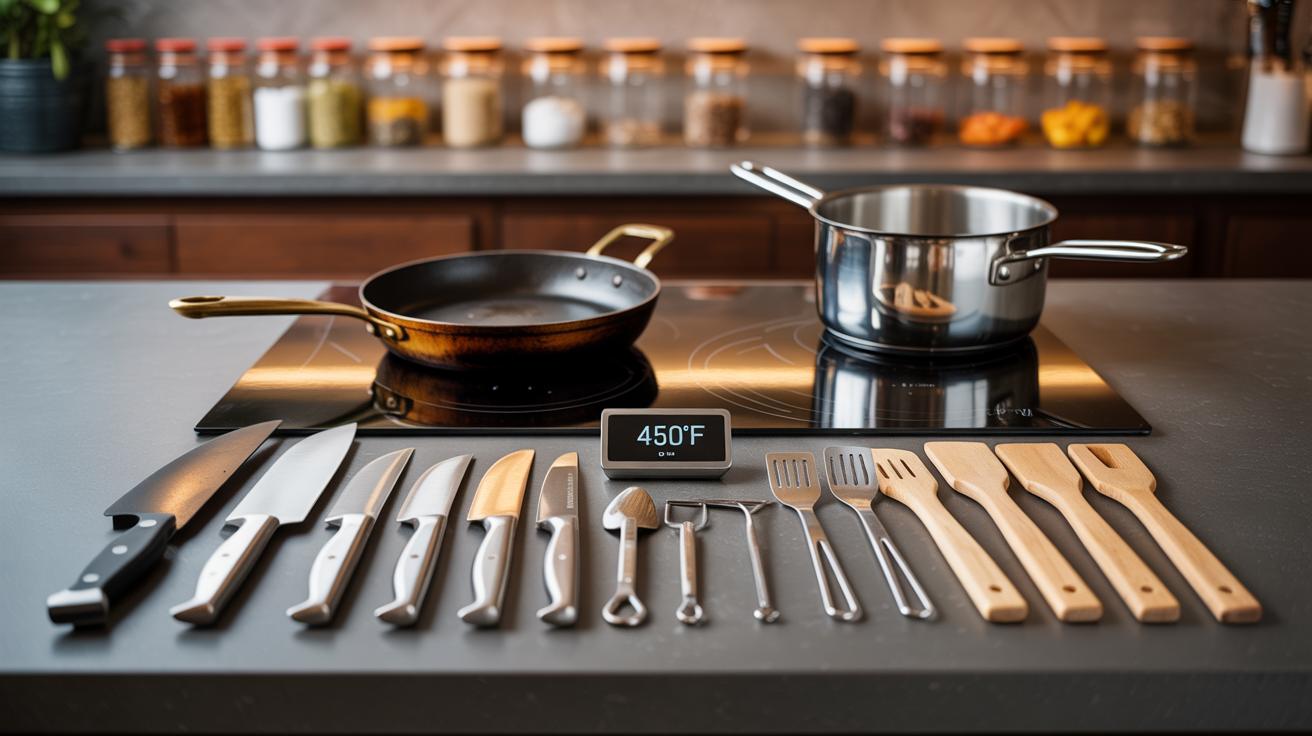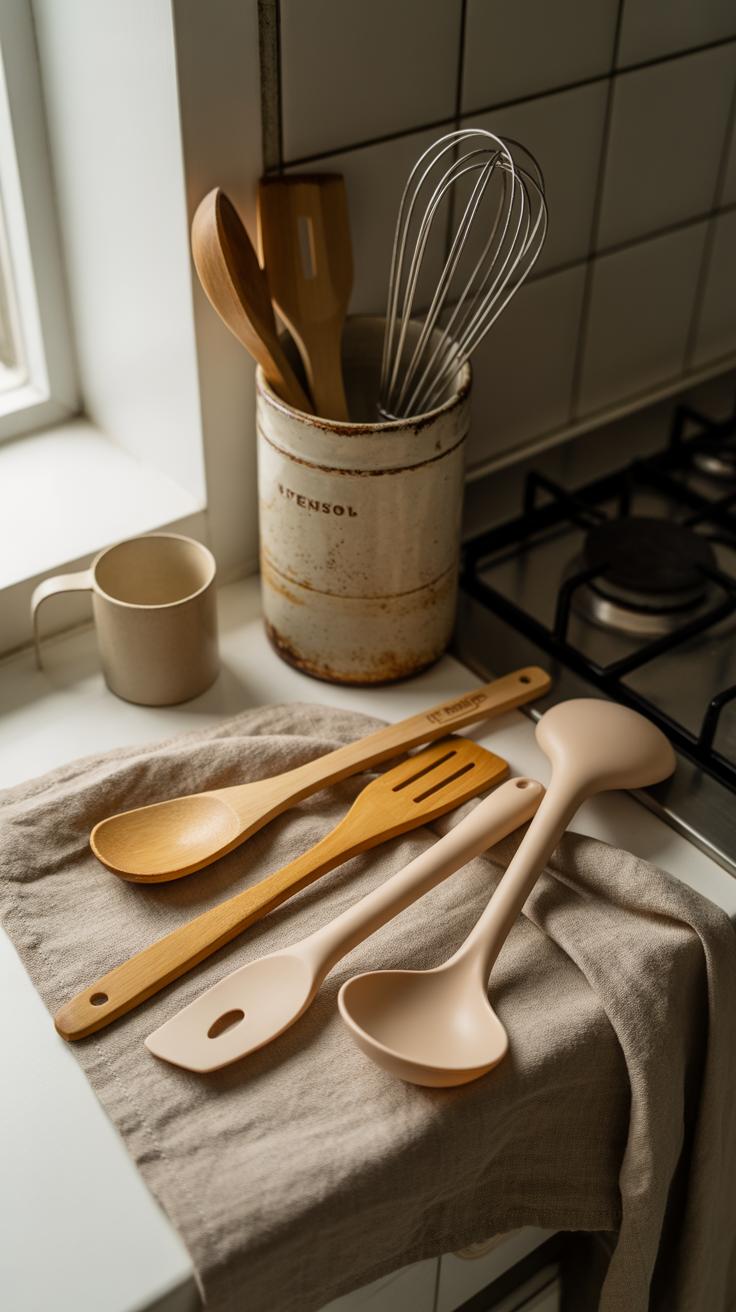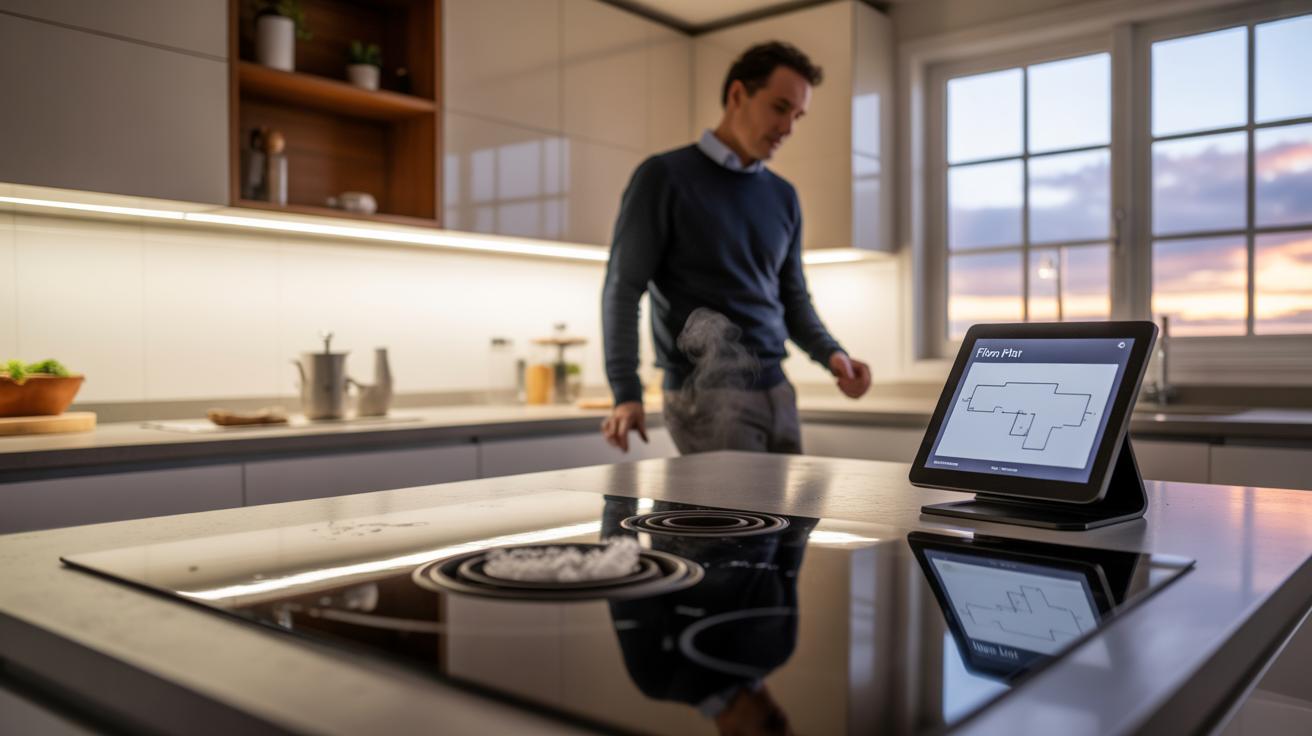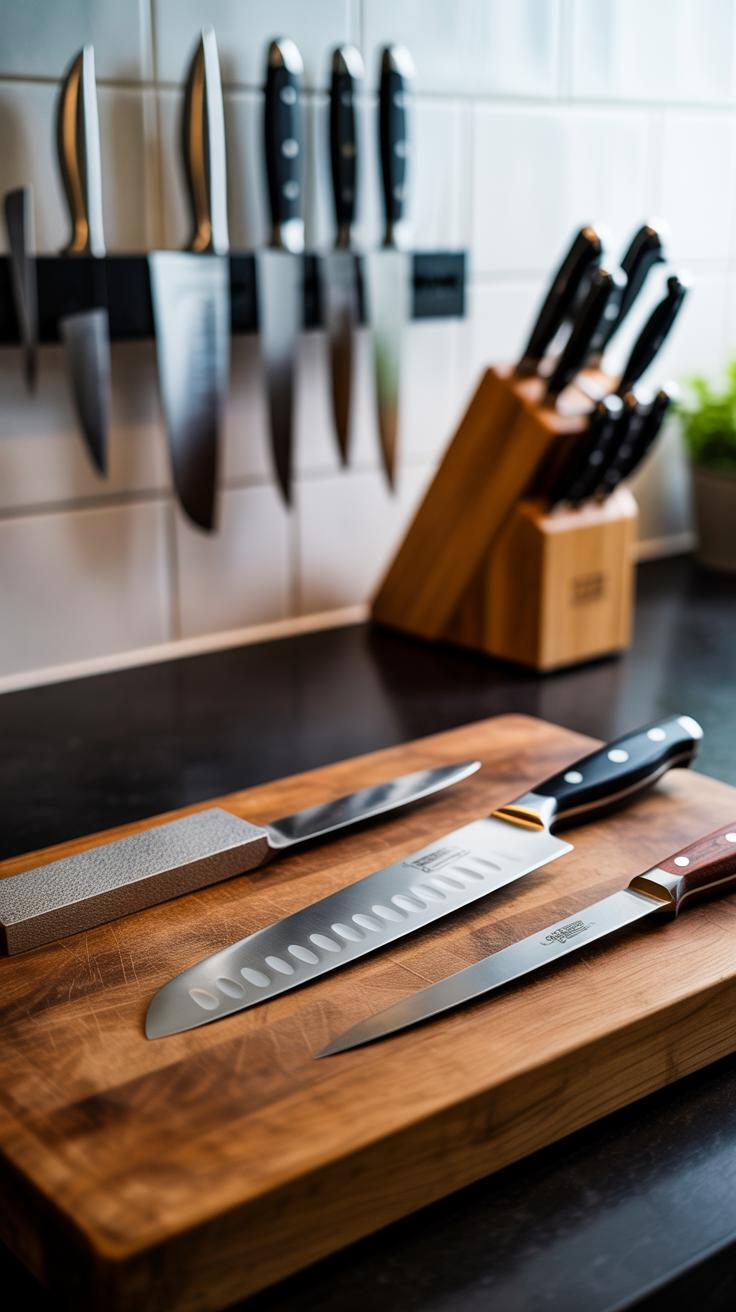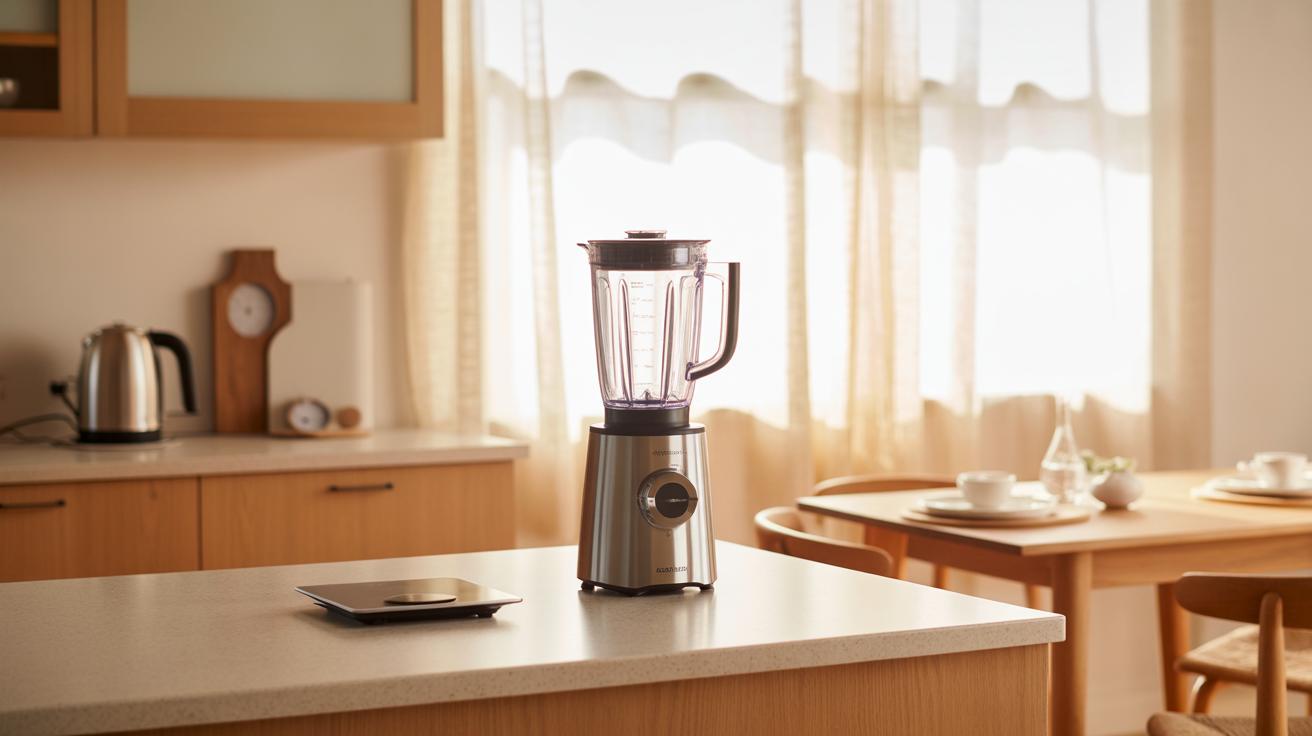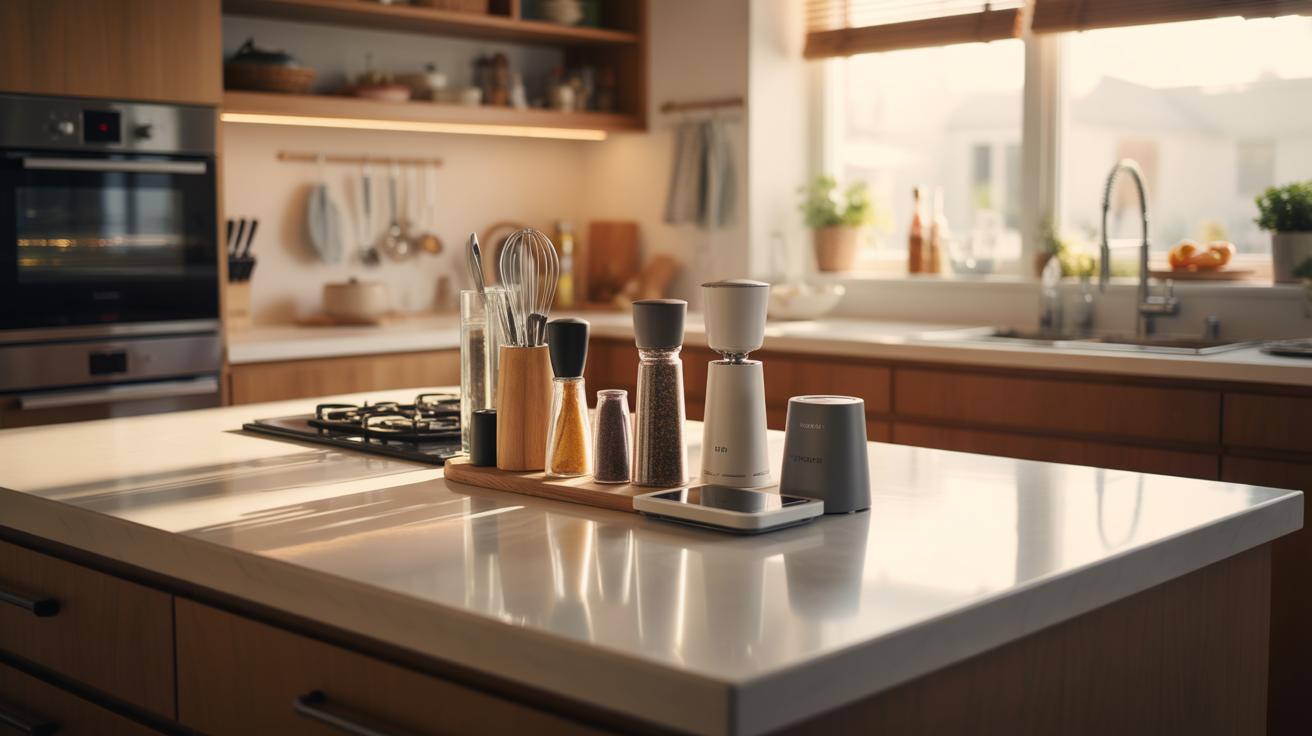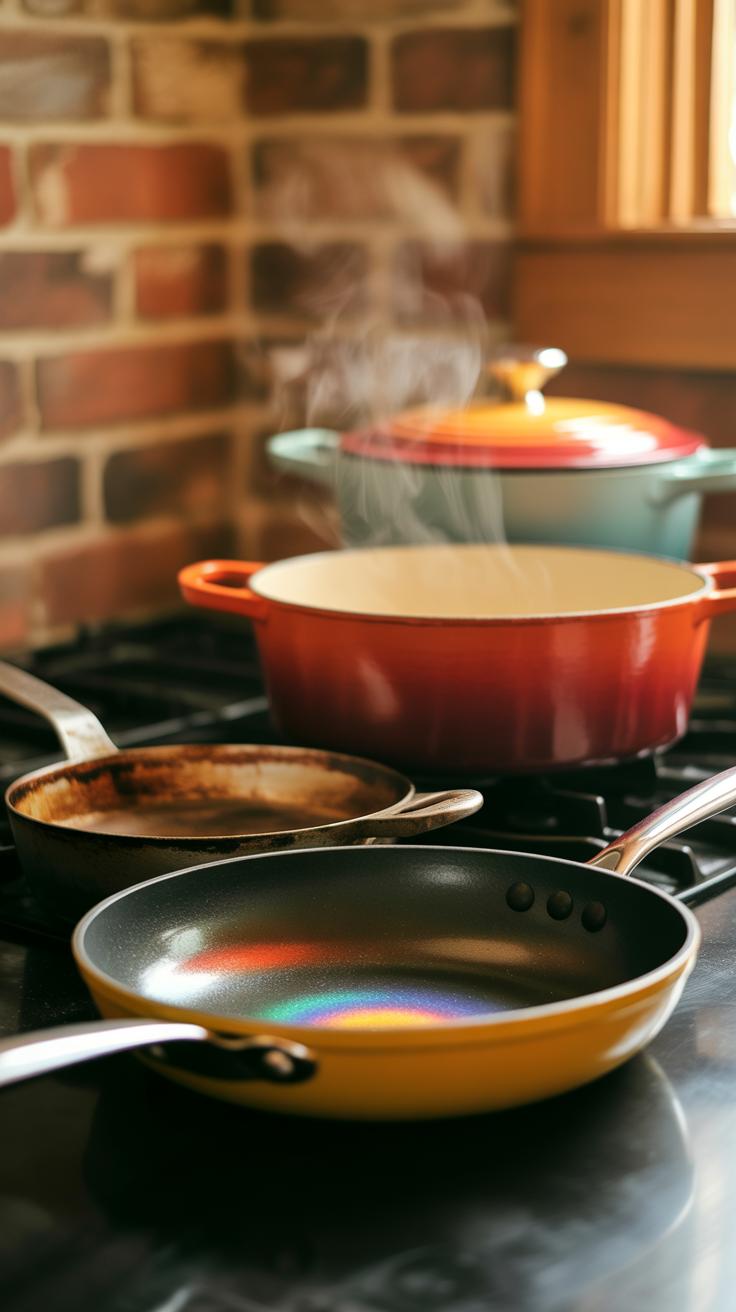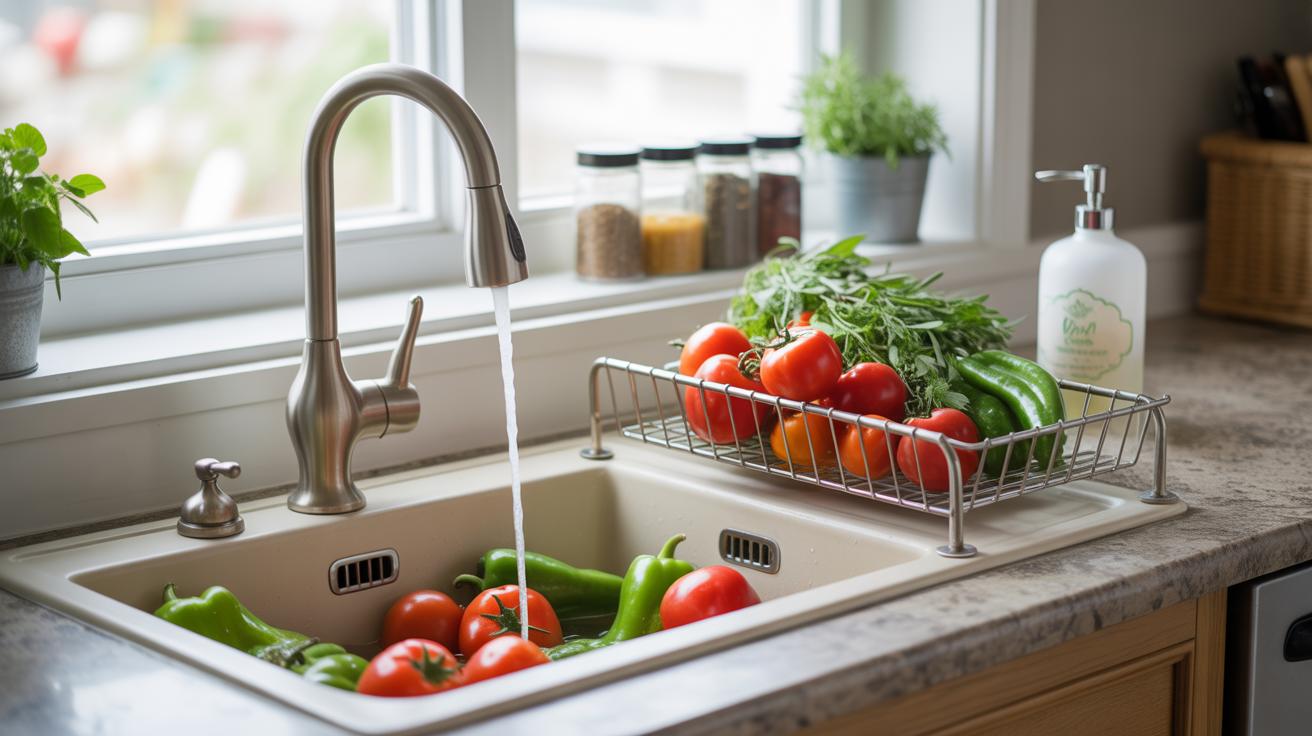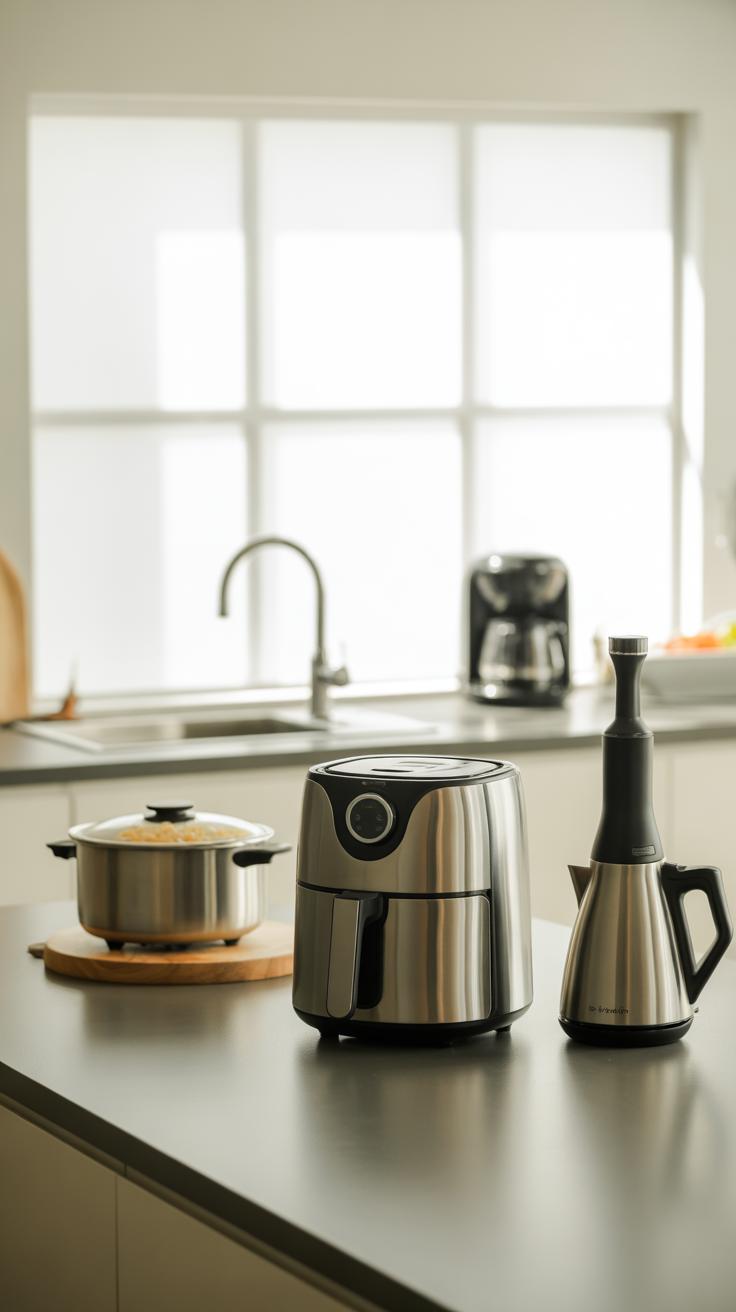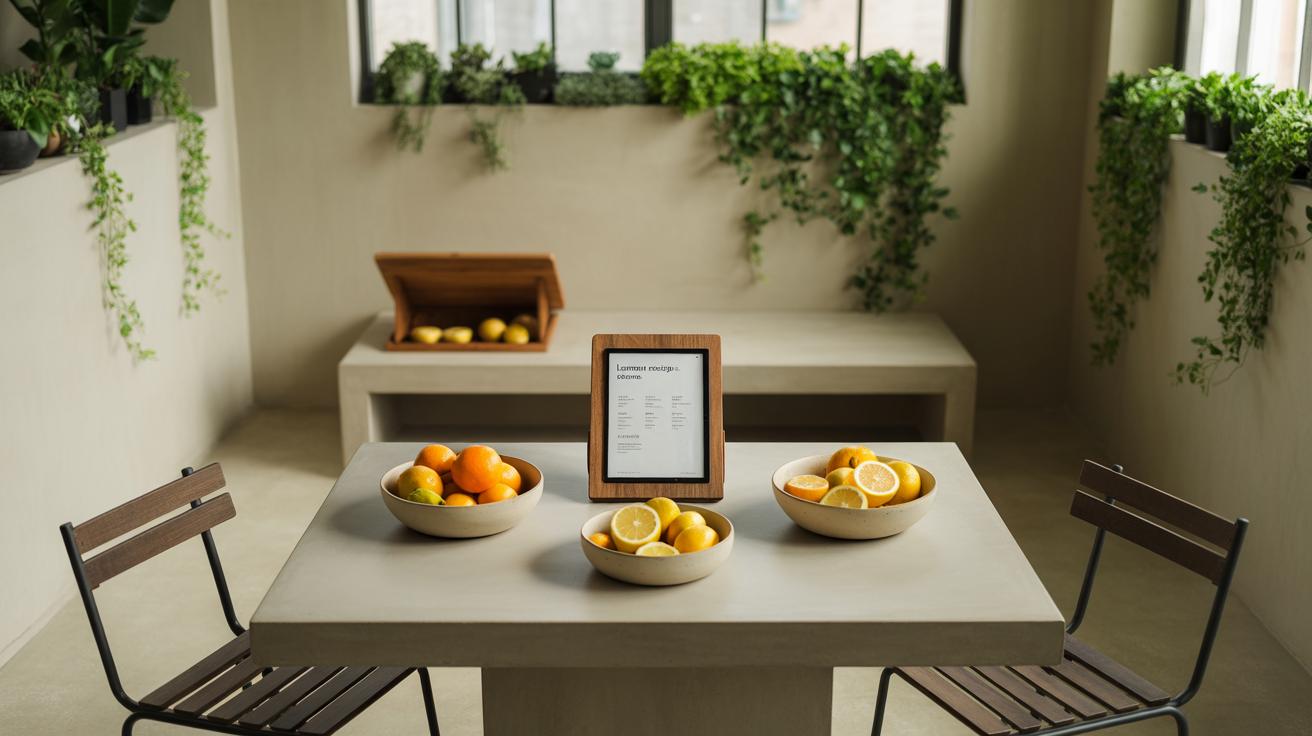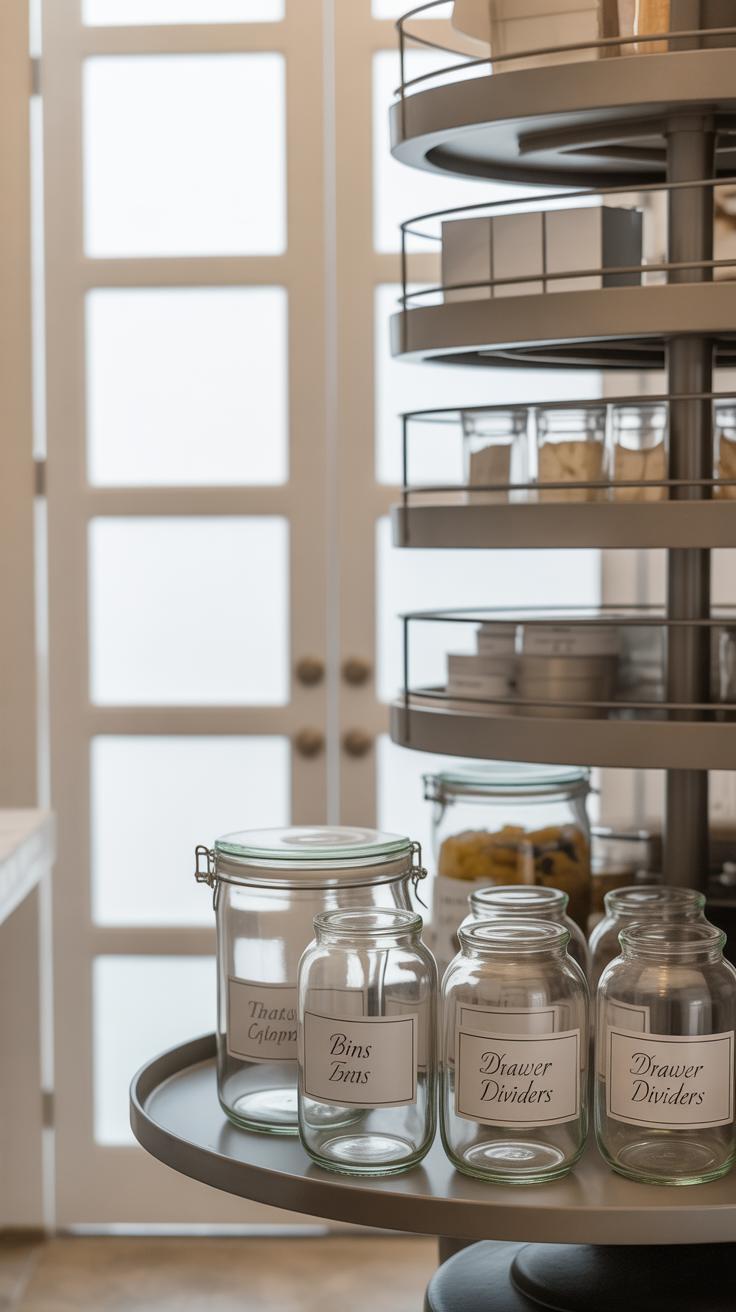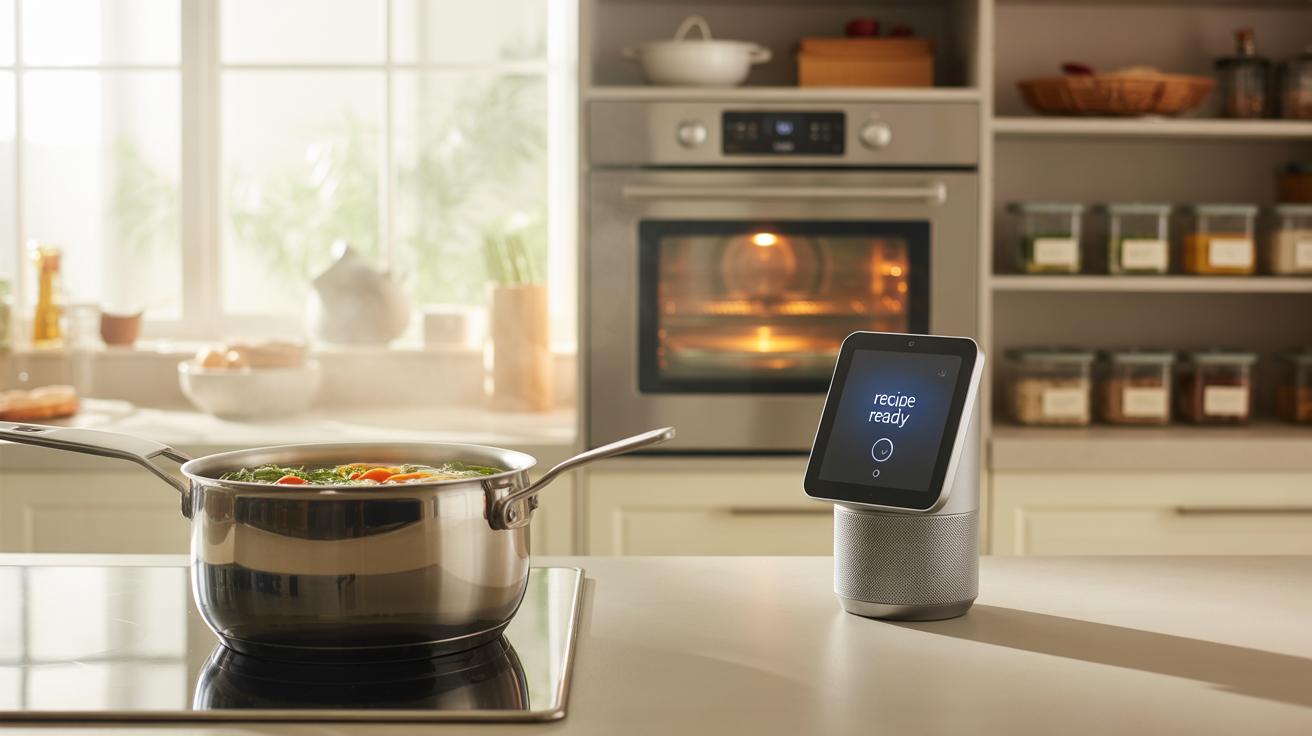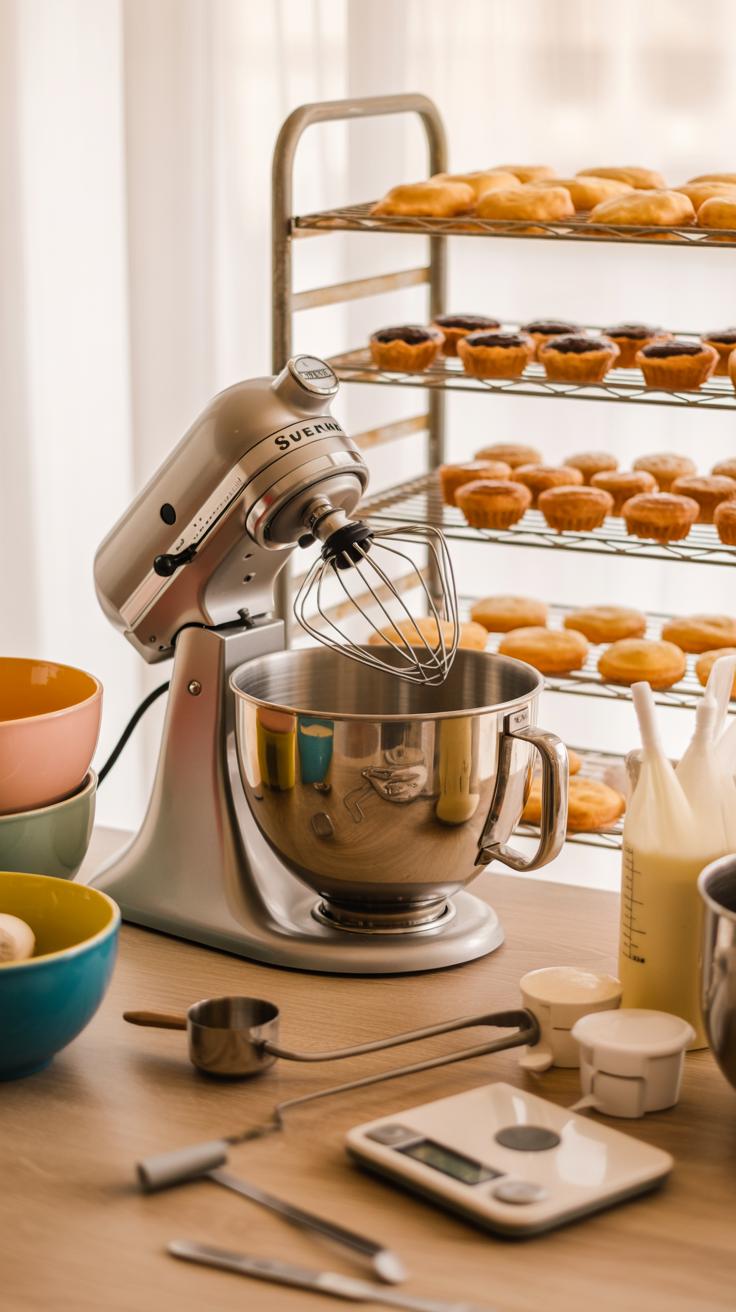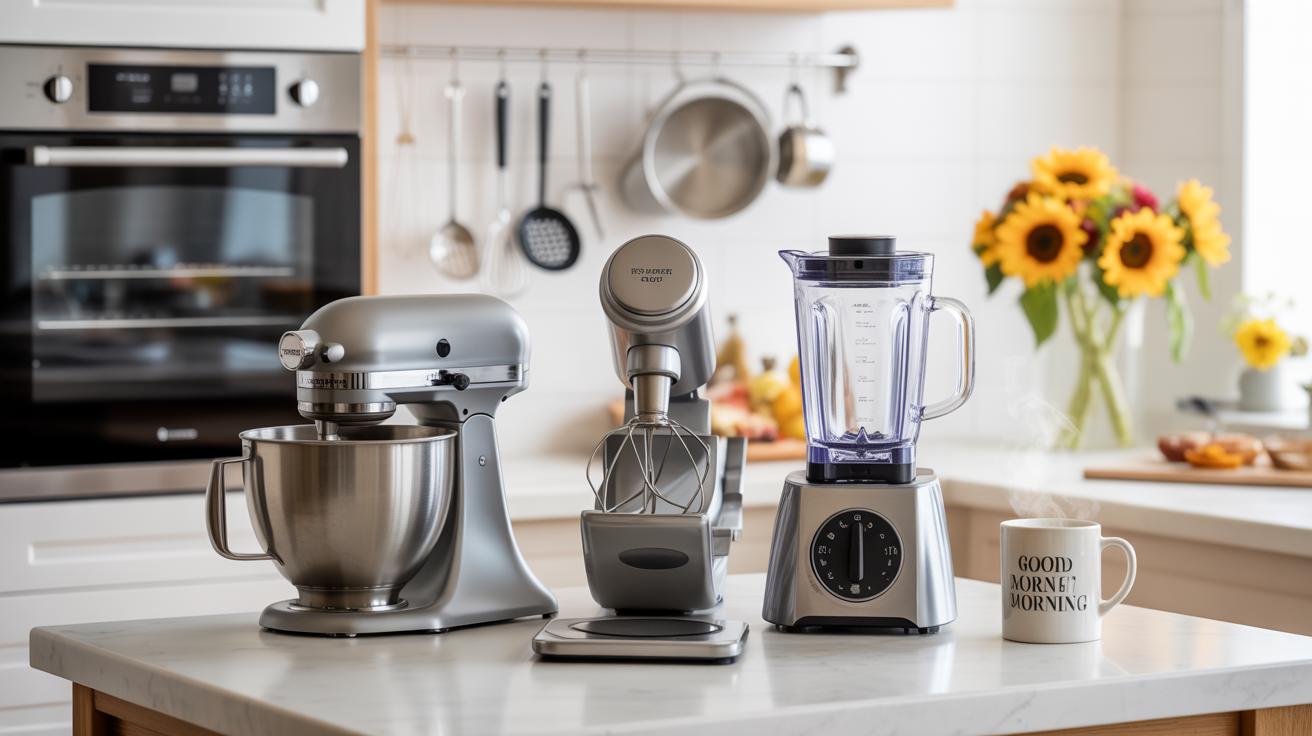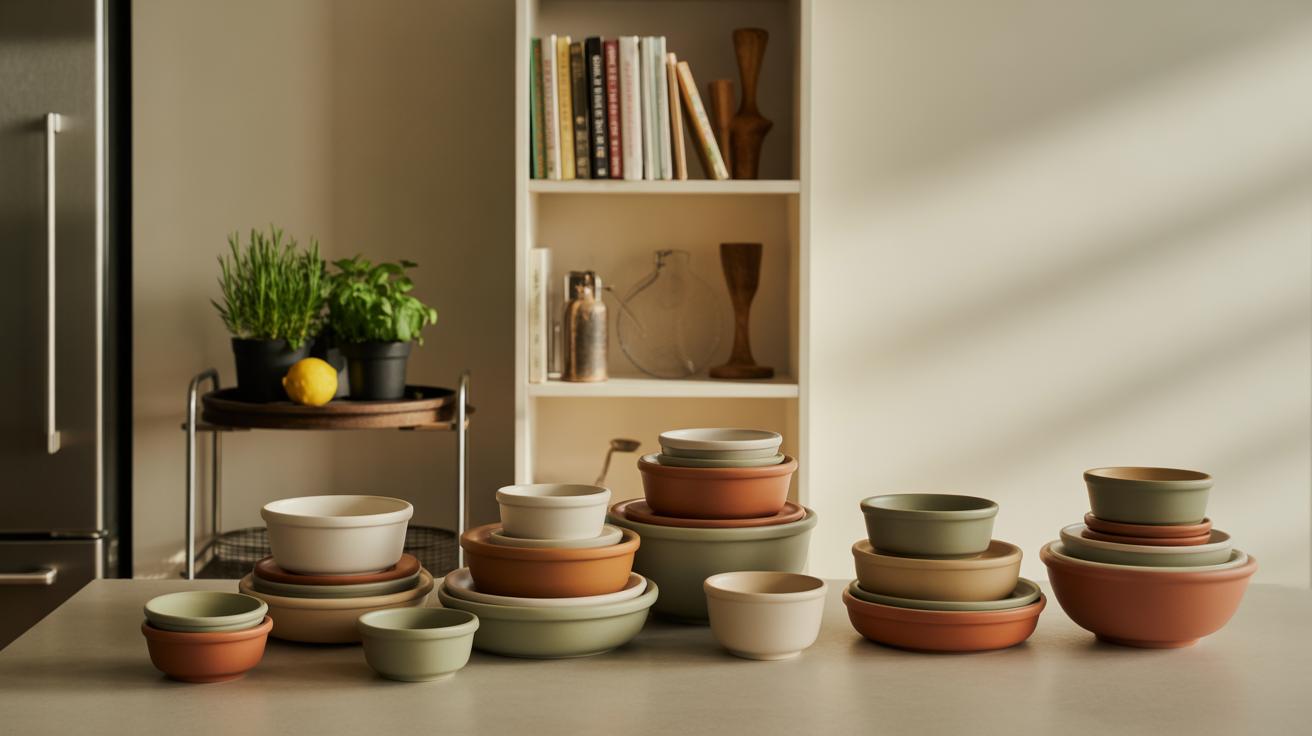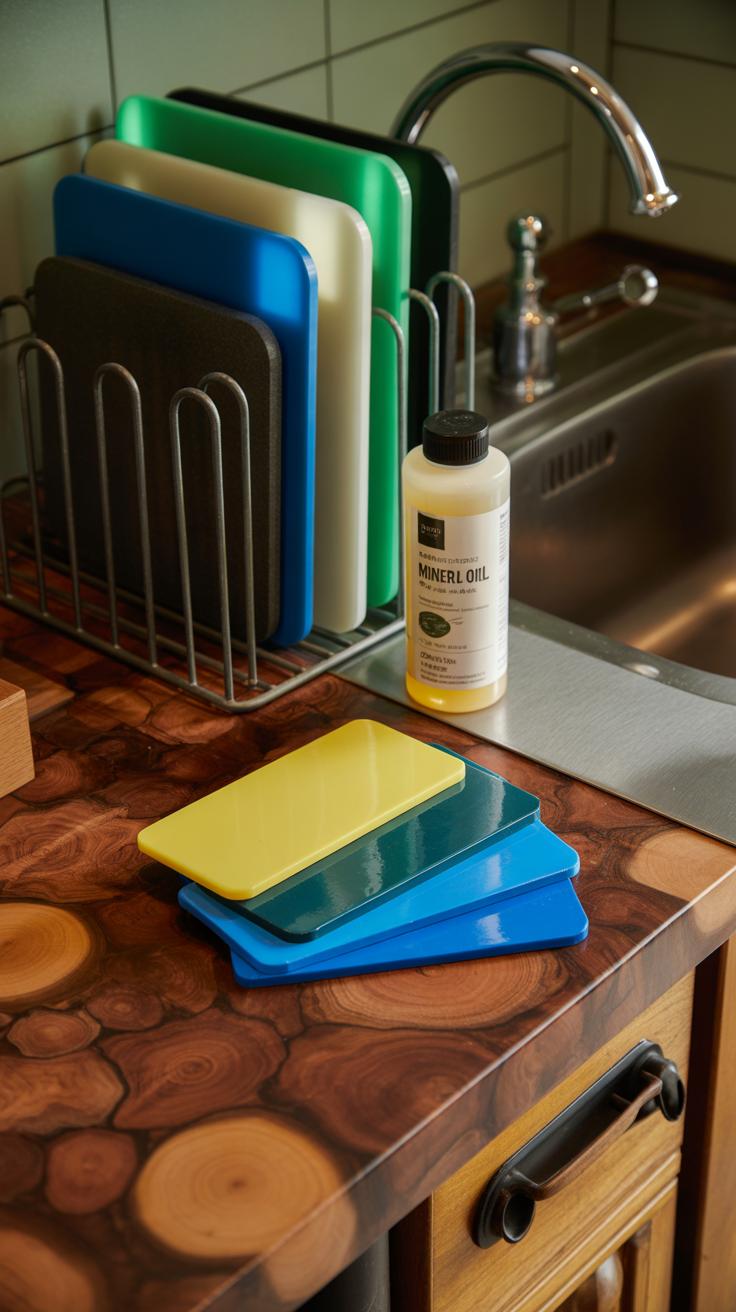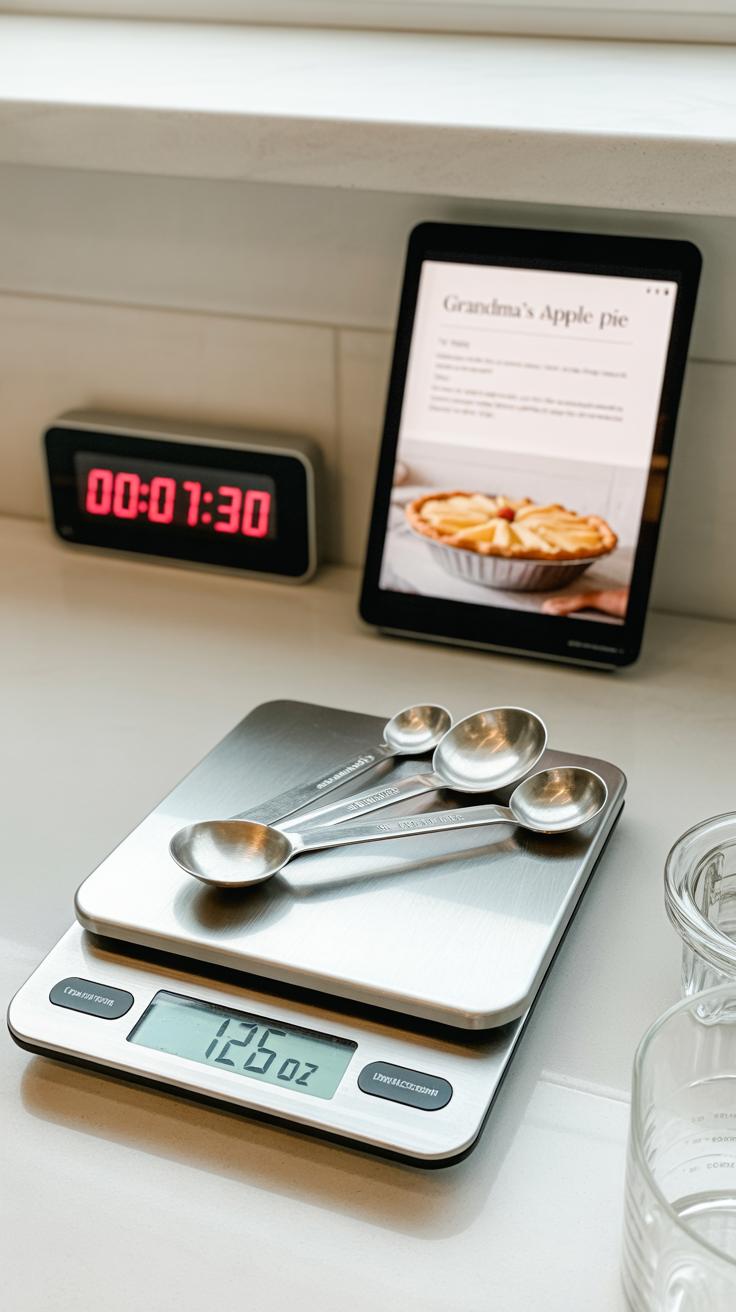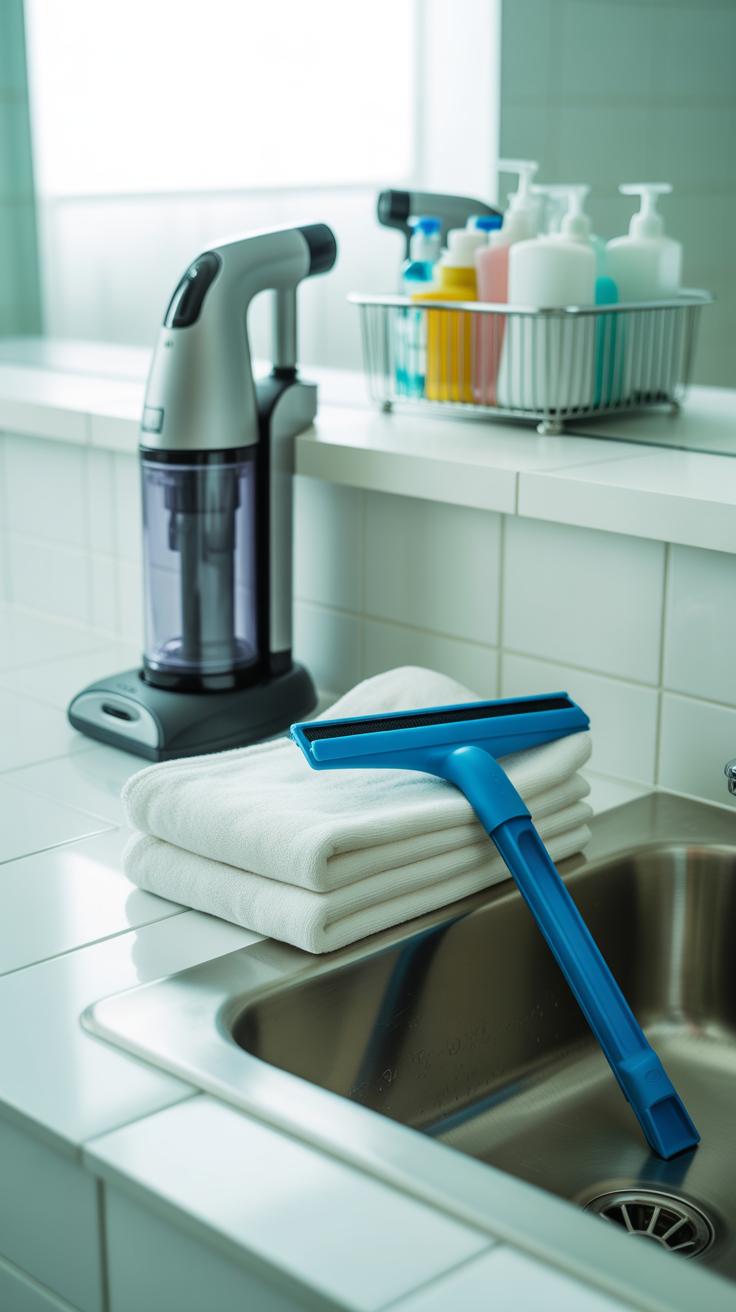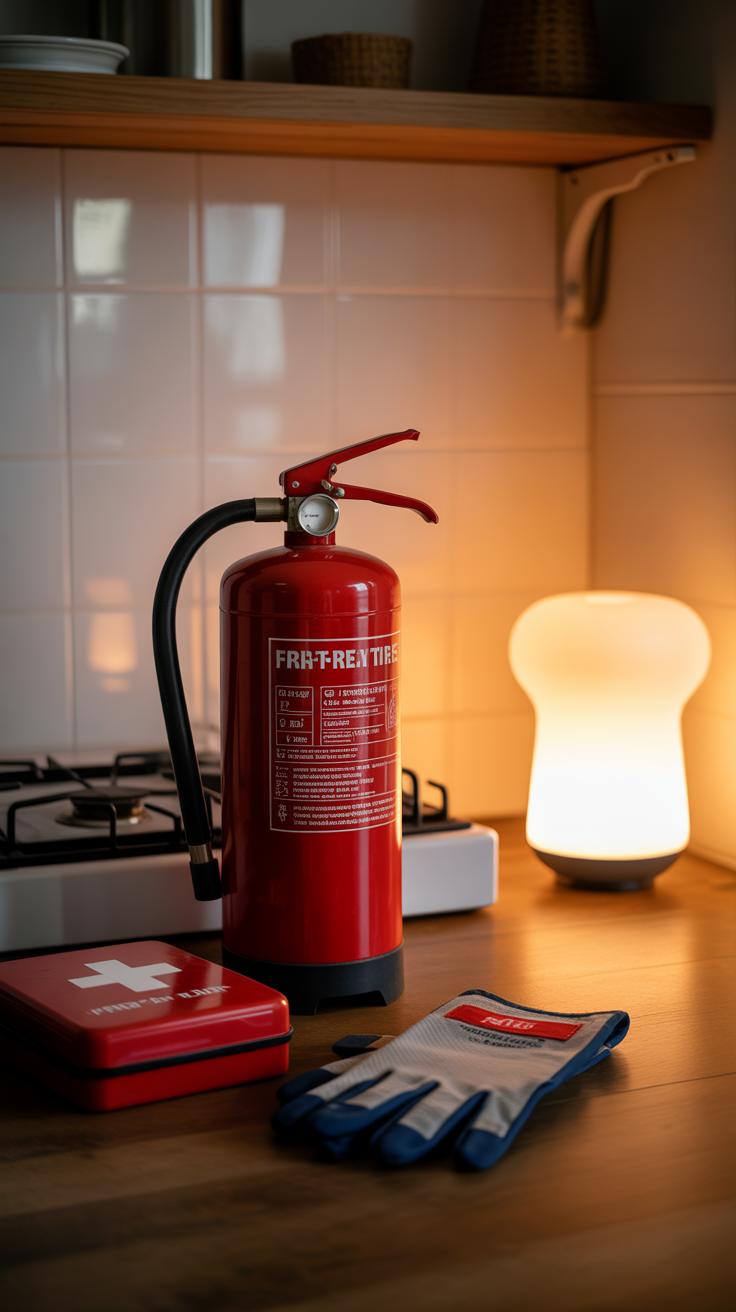Introduction
Every smart cook knows that having the right kitchen items makes a big difference in preparing meals. This year, you can upgrade your kitchen with tools that help you save time and cook with ease. From simple utensils to advanced gadgets, the right items help you enjoy cooking more and achieve better results.
In this article, we will explore kitchen items every cook should own. You will discover what tools are essential for your kitchen, how to pick them, and how they make cooking easier. Whether you are new to cooking or want to refresh your kitchen, this guide will provide clear and practical advice to help you choose the best items.
Basic Kitchen Utensils That Start Your Collection
Essential Utensils to Begin Your Functional Kitchen
Starting a kitchen without basic utensils is like trying to write without a pen. You need a few key items—spoons, spatulas, knives, and peelers—that serve as your daily workhorses. For instance, a sturdy spoon isn’t just for stirring; it helps with tasting, serving, and even scraping pans. Spatulas come in handy for flipping pancakes or folding batter, giving you control where fingers simply can’t reach.
Knives, of course, are fundamental, whether you’re chopping vegetables or slicing bread. Peelers might seem minor but make prepping fruits and veggies quicker and neater. Daily use sharpens familiarity with these tools, building comfort and speed in the kitchen. Starting with these basics gives you room to grow your collection wisely.
Daily Tools for Cooking and Preparing Food
Wooden spoons, whisks, tongs, and measuring cups deserve a spot in every kitchen. Wooden spoons stand up well to heat and don’t scratch cookware, perfect for stirring sauces or risottos. Whisks help mix ingredients smoothly, adding air when needed, like whipping eggs or emulsifying dressings. Tongs give you grip and control, useful for turning meats or serving pasta without burning yourself.
Measuring cups ensure your recipes run smoothly, especially for baking where precision matters. These tools might not sound glamorous but they quietly make cooking easier and keep tasks manageable.
Choosing Durable and Practical Kitchen Utensils
When picking utensils, durability and comfort matter more than fancy designs. Instruments made of wood, silicone, or stainless steel tend to last longer and clean easier. For example, wooden spoons resist heat but might absorb smells if not cared for properly. Silicone spatulas are flexible and gentle on non-stick surfaces, yet strong enough to handle thick batters.
Stainless steel works well for tongs or whisks because it’s sturdy and won’t rust if dried properly. Comfort in handle design is key since you’ll use these tools repeatedly—it shouldn’t feel awkward or cause hand strain. Choosing utensils that balance practicality with feel helps your kitchen work flow without snagging your focus.
Knives That You Should Invest In
Discussing the Importance of a Good Set of Kitchen Knives
A decent set of kitchen knives is more than just a purchase—it’s a real upgrade to your cooking experience. If you’ve ever struggled to slice a tomato evenly or found yourself hacking at bread with a blunt knife, you know the frustration. A chef’s knife, paring knife, and serrated knife form the core trio you really should have. Each one tackles different tasks with ease, making cooking less of a chore and, I think, more enjoyable.
What makes a knife “good”? It’s about the balance of the weight, the sharpness of the blade, and the comfort of the handle in your hand. A poorly designed knife can actually slow you down and tire your hand out faster than you’d expect. And caring for your knives—keeping them clean, dry, and storing them properly—can extend their life quite a bit. It’s easy to neglect that part though, until a dull, rusty blade reminds you.
Understanding Different Types of Kitchen Knives
Each knife in your kitchen serves a purpose. The chef’s knife is the all-rounder, usually 8 to 10 inches long, perfect for chopping, slicing, dicing—pretty much everything. The paring knife, smaller and more nimble, is your go-to for peeling, trimming, or intricate work like deveining shrimp or cutting garnishes.
The serrated knife? You might overlook it until you try to slice a crusty loaf or tomatoes without squashing them. The jagged edge grips tough exteriors while still slicing cleanly inside. They’re specialists, really—it’s the kind of tool that shows you why a one-knife-fits-all approach often falls short in the kitchen.
Keeping Your Knives Sharp and Safe
Sharp knives make cooking faster and safer. A dull blade slips more easily, and that’s where accidents happen. Regular sharpening keeps your knives at peak performance. You can use a whetstone, sharpening rod, or even send them to a professional if you’re unsure. But yes, sharpening does take some practice, and some kits feel intimidating at first.
Handling knives safely means focusing on your cutting surface and your grip. Always cut away from your body, and use a stable cutting board—not the kitchen counter or your hand. Storage matters too—drawer jumbles can dull blades or worse, cause cuts. Magnetic strips, knife blocks, or blade guards are worth it.
Are you sharpening your knives often enough? Maybe not. It’s one of those small habits that impact your cooking more than you’d guess.
Essential Cookware That Makes Cooking Simpler
When cooking, the right cookware shapes your experience more than you might realize. Think about pots, pans, and baking dishes—not all serve the same purpose, even if they look similar at first glance. A heavy-bottomed pot is great for stews or boiling pasta, while a shallow skillet excels with quick sautés or frying eggs. Baking dishes come in glass or metal, and each affects how heat moves through your food, changing texture and crusts.
Choosing wisely means matching cookware to your cooking style. For instance, a cast iron skillet brings crispness to a sear but is less ideal for delicate sauces. Meanwhile, non-stick pans prevent sticking but don’t brown as well. This mix-and-match approach can actually simplify your routine, keeping frustration low.
Selecting the Right Pots and Pans
Cookware isn’t just about looks; material matters a lot. Stainless steel heats unevenly but holds up well, making it perfect for boiling or simmering. Cast iron distributes heat evenly and retains it, which is why I reach for mine on chilly mornings to make pancakes. Yet, it’s heavy and requires seasoning to stay in shape.
Non-stick pans, on the other hand, are easy and forgiving—for instance, perfect for cooking eggs or fish where sticking is a common issue. But they don’t handle high heat or metal utensils well, so using them carefully really matters if you want them to last.
How to Care for Your Cookware
Taking care of your pots and pans helps them perform better and last longer. For stainless steel, a quick scrub with hot water and soap usually does the trick. Burnt-on food might need simmering with soapy water or a mild abrasive cleaner.
Cast iron requires more attention. Avoid soap when cleaning; a stiff brush and hot water usually suffice. After drying thoroughly, applying a thin layer of oil keeps the seasoning intact—something I forget sometimes, with less than ideal results. Non-stick pans are delicate—hand wash gently and avoid abrasive sponges to keep the coating intact. Keeping these basics in mind means your cookware can grow old with you, rather than requiring early replacements.
Small Appliances That Save You Time
Small appliances like blenders, food processors, and mixers can really cut down your prep time. Think about chopping vegetables by hand—tedious, right? A food processor handles that in seconds, freeing you up for other tasks. Blenders do more than just smoothies; they make soups and sauces in a flash. Mixers aren’t just for bakers either—mixing batters or whipping cream gets a lot easier once you plug one in.
Sometimes, I find myself relying on these tools more than I expected. They seem like luxuries but end up becoming necessities, especially when your weeknights are busy. If you regularly make smoothies, soups, or baked goods, these appliances will help you get the job done faster and maybe with less frustration.
Choosing Appliances That Fit Your Cooking Style
Not everyone needs every appliance, though. If you mostly cook simple meals or eat raw foods, a food processor might be overkill. But for those who enjoy homemade sauces, soups, or baking from scratch, a mixer and blender become almost indispensable. Ask yourself: What do I cook most often? How much time do I want to save? Sometimes, less is more—pick one or two that suit your routine best rather than loading the kitchen with gadgets you rarely touch.
Maintaining Small Appliances for Long-Term Use
Taking care of your appliances is surprisingly easy but often overlooked. Cleaning them right after use prevents gunk build-up, which otherwise leads to poor performance or odors. Storing attachments neatly saves space and keeps you from hunting for parts. Occasionally check power cords and blades for wear—they don’t last forever. If something starts to slip or sound off, addressing it early can save you from replacing the whole unit. While some parts might be dishwasher-safe, it’s usually smarter to hand wash sensitive components gently to avoid damage.
Organizing Your Kitchen Space Wisely
Best Storage Solutions for Your Kitchen Items
Keeping your kitchen items neatly stored isn’t just about looks—it actually changes how you cook. When you can find what you need quickly, meal prep flows smoother, and frustration drops. Think about clear, airtight containers for dry goods. They keep ingredients fresh and let you spot when things run low without digging through a pantry mess.
Look for stackable containers to save space, or tiered racks in cabinets to fit spices and small jars efficiently. Drawer dividers are another game-changer, especially for utensils or gadgets that often jumble together. I once wasted ten minutes searching for a peeler hidden under a pile of spoons—simple drawer organizers certainly would’ve helped.
Open shelves can work if you keep it tidy, but closed bins protect items like cutting boards or pot lids from dust. Sometimes, you’ll find that mixing storage types works best—maybe racks for pots, containers for ingredients, and dividers for flatware. The key? Items that protect what you own but keep it visible at a glance.
Simple Habits to Keep Your Kitchen Tidy
Organization tools work only if you use them consistently. A quick habit I try (though not always successfully) is a five-minute cleanup after cooking. Putting everything back in its place makes mornings less hectic and keeps clutter from piling up over days.
Try designating “zones” in your kitchen: prep tools in one drawer, baking items in another, cutting boards near the prep area. This way, you instinctively know where to return things, which reduces random piling on counters. It might sound obvious, but sorting mail or unpacking groceries immediately can keep flat surfaces clear.
One thing I notice is that frequent tidying doesn’t feel like a chore if it’s quick and targeted. If you catch spills or crumbs as they happen, the kitchen stays fresher, and you don’t end up overwhelmed. Why not experiment with a nightly wipe-down or putting away stray boxes before bed? It’s a small step—but it helps.
Essential Baking Tools You Should Own
When it comes to baking, having the right tools can make all the difference. Measuring spoons, for example, are small but mighty. They ensure you don’t overshoot sugar or salt, which can ruin a recipe—been there, done that. Mixing bowls come next. You want a set in various sizes; it’s tempting to just use one big bowl, but separating ingredients works better.
Baking trays can’t be neglected either. They should be sturdy and fit your oven well. I tend to have a couple on hand—one for cookies, another for roasting nuts or veggies. Then, cooling racks help keep your baked goods from getting soggy. Without proper airflow underneath, a crisp crust turns limp.
Each tool plays a part. Skipping or improvising too much can mean uneven textures or odd flavors. Which baking tools do you lean on most? Sometimes I surprise myself by forgetting a simple thing like a cooling rack, then regretting it halfway through.
Choosing Baking Tools That Deliver Accuracy
Baking isn’t forgiving. It’s less about guesswork and more about precision. That’s why measuring spoons and cups are essential—to get exact amounts. Even a slight variation in flour can change how a cake rises or falls.
Mixing bowls, while simple, need to be the right size to mix thoroughly without spills. If your bowl is too small, ingredients won’t combine well, potentially altering texture. Baking trays should heat evenly; cheap ones warp or overcook edges. It’s tempting to scrimp here, but it affects results more than you might expect.
Cooling racks matter too—they help baked goods cool evenly, preventing condensation buildup. That means the difference between a limp muffin and one with a lovely crust. So, accuracy isn’t just about measuring; it’s about choosing tools that perform consistently for each step.
Maintaining and Using Baking Tools Correctly
Taking care of your baking tools extends their life—and maintains your results. Measuring spoons and cups should be washed thoroughly and dried immediately to avoid rust or sticky residue. I once had a set that developed a weird taste after months of neglect. Not great.
Mixing bowls, especially glass or metal, need gentle handling to avoid chips or dents. Avoid scratching nonstick trays with metal utensils, as damaged surfaces affect heat distribution. Cooling racks require regular cleaning; bits of crumb stuck to them can burn in the oven, causing unwanted flavors.
Store tools where they’re easy to grab but won’t get damaged. I find drawer dividers help here, keeping small items like spoons neatly separated. Would you agree that well-maintained tools make a subtle but real difference? Maybe that extra care shows up in the taste more than we realize.
Cutting Boards That Protect Your Knives
Choosing the right cutting board is more than just picking something to chop on. It actually affects how long your knives stay sharp and how safe your kitchen feels. When you use a hard surface like glass or stone, your knife edges dull faster, which can lead to frustrating cutting and even accidents. Softer boards, like wood or bamboo, give a bit under the blade, helping preserve that sharpness. I remember switching from cheap plastic boards to a wooden one and noticing my knives stayed sharper longer—something I didn’t expect at first.
There are a few popular materials each with their quirks:
- Wood: Gentle on knives and naturally antimicrobial when cared for properly, but needs regular oiling to prevent cracking.
- Plastic: Comes in vibrant colors, easy to clean in the dishwasher, but can scar quickly, harboring bacteria if not replaced often.
- Bamboo: Harder than most woods and eco-friendly, though it might be tougher on knives and can dry out without maintenance.
Which one fits your kitchen? It depends on how much you cook and your cleaning routine. Do you prefer a low-maintenance board or one that requires some care but rewards with durability? For example, if you often prepare raw meat, plastic boards might be safer since you can sanitize them more easily. On the other hand, if you mostly chop vegetables and fruit, a wooden board feels more natural and lasts longer.
Keeping your cutting boards in good shape isn’t complicated, but skipping maintenance can cause problems. Wash wooden and bamboo boards gently by hand, avoid soaking them, and oil them every few weeks. For plastic, check for deep grooves where bacteria like to hide. If your board looks worn or smells off, replacing it might be the better choice. It’s a small step but makes a big difference in safety and knife care.
Measuring Tools for Precise Cooking
Why Measuring Cups, Spoons, and Kitchen Scales Matter for Consistency
When you want your dish to turn out the same way every time, measuring tools become your best friends. It’s all about precision—too much flour or too little salt can completely change the outcome. Measuring cups and spoons help with liquids and small quantities, but a kitchen scale often gives the clearest picture, especially for baking where every gram counts.
I remember trying a cookie recipe without weighing ingredients, and the cookies came out dry and crumbly. Using a scale since then has saved me from many failed batches. Consistent measurement means less guesswork and fewer surprises. Maybe you won’t always need it for a stew, but for baked goods and some sauces, it’s almost essential.
Differences Among Measuring Tools and Their Uses
Measuring cups usually come in sets for both liquid and dry ingredients. Use liquid cups for water, oils, and milk—they often have a spout. Dry cups suit flour or sugar but can lead to errors if you just scoop without leveling off.
Spoons measure smaller amounts like baking powder or spices. Their precision is handy but not always perfect for bulkier items. That’s where a kitchen scale shines. Weighing flour, for instance, is more accurate than scooping because the way you pack it changes volume.
So, when should you pick which? Baking: scales and spoons. Cooking pasta water: probably eyeball and liquid cup. The right tool depends on what you’re making and how exact it needs to be.
Caring for Measuring Tools and Keeping Them Accurate
Measuring cups and spoons don’t need much beyond regular washing, but watch for chips or fading markings—they can throw off your results. For scales, you should zero out before each use and occasionally test with a known weight, like a standard package of sugar.
I’ve found that if a scale skips numbers or jumps around, it’s time to recalibrate or replace it. Calibration instructions vary but usually come with the scale or online.
Keep these tools clean and dry. A sticky residue can change volume, and drops of water might make a scale struggle. Checking your tools every so often isn’t just picky—it actually saves you from wasted ingredients and frustrating kitchen experiments.
Cleaning Tools That Make Kitchen Maintenance Easy
Keeping your kitchen clean feels like a never-ending task, right? That’s where the right cleaning tools come in. Items like sponges, dishcloths, scrubbers, and brushes aren’t just basic supplies — they make a real difference in keeping things hygienic and manageable.
Sponges help tackle stuck-on food and grease, while soft dishcloths wipe down surfaces without scratching. Scrubbers, especially the tougher ones with nylon bristles, are great for pots and pans that don’t come clean with just soap and water. Brushes with long handles help you reach into narrow bottles or corners where gunk tends to hide. I’ve found having a variety makes wiping the entire kitchen, from counters to utensils, less daunting.
Selecting Effective Cleaning Tools
Not every scrubber or sponge fits every job. You want something strong enough to remove grease and grime but gentle enough to avoid damaging your surfaces. I tend to avoid steel wool on non-stick pans because it messes up the coating fast. Instead, softer scrub brushes or fiber sponges do the trick. For wiping counters, microfiber cloths are great; they catch dust and crumbs without just moving them around.
Look for items labeled as non-abrasive if you worry about scratching. A good scrubber should make your dishes shine without making you replace them soon after.
Proper Care for Kitchen Cleaning Tools
Cleaning your cleaning tools might sound odd, but it’s necessary. Sponges, for example, can turn into breeding grounds for bacteria if left damp and dirty. I usually toss mine in the microwave for a minute to kill germs, but washing sponges in hot water and soap also helps. Dishcloths need regular washing and full drying — using the same one all week can feel convenient but isn’t the cleanest practice.
Replace sponges every couple of weeks or as soon as they smell or look worn out. It’s tempting to hold on to them longer, especially when money’s tight, but I think the risk of spreading germs isn’t worth it. Brushes generally last longer, but be sure to rinse them out thoroughly after each use and let them air dry. Doing these small things can keep your kitchen safer so you can focus on cooking, not worrying about germs lingering around.
Safety Items Every Kitchen Needs
When you’re cooking, safety can seem like an afterthought, but it really shouldn’t be. Oven mitts, for example, are simple but crucial. They protect your hands from burns when you grab hot pans or open the oven door. I remember once I tried using a dish towel—it didn’t end well. That’s why heat-resistant gloves or mitts designed for kitchen use are the smarter choice.
Then there’s the fire extinguisher. It’s easy to ignore until you need it, but having one close by can stop a grease fire or electrical flare-up before things get out of hand. You might think, “I’ll never need that,” but kitchen fires happen more than you expect.
And don’t forget a first aid kit. Minor cuts and burns happen all the time. Having bandages, antiseptic, and burn cream within reach can make treating small injuries quick and less stressful. It’s really about being prepared—you don’t want to be hunting around when someone’s hurt.
Choosing Effective Safety Gear for Your Kitchen
Not all oven mitts and gloves are created equal. Heat resistance varies a lot. Some cheap fabrics won’t protect you against hotter pans or open flames. Gloves made with silicone or thick aramid fibers stand up better, especially if you handle roasting trays or grills often.
Fire safety tools should be easy to reach, not buried in a cabinet. I’ve seen kitchens where the extinguisher is tucked away somewhere inconvenient—it defeats the point. Think about how fast a fire can spread and make sure your tools are accessible without fumbling.
Practices to Keep Your Kitchen Safe
Safe cooking isn’t just about the right gear; it’s a habit. For instance, never leave frying pans unattended. Grease can ignite in seconds. Also, regularly inspect your stove, oven, and electrical appliances for signs of damage—like frayed cords or loose connections.
Clear clutter from around burners and ovens. Flammable items should never be close by. And test your fire extinguisher occasionally; a dead extinguisher won’t help much, right? These small checks often get overlooked but they might be the difference when something goes wrong.
Conclusions
Choosing the right kitchen items can transform your cooking routine. These tools help you work faster, stay organized, and cook meals that taste great. Keeping your kitchen stocked with these essentials lets you handle any recipe with confidence.
Remember, buying smart tools is an investment in your cooking skills and enjoyment. Focus on items that fit your style and needs. With these kitchen items, you will feel ready to create delicious meals every day.

